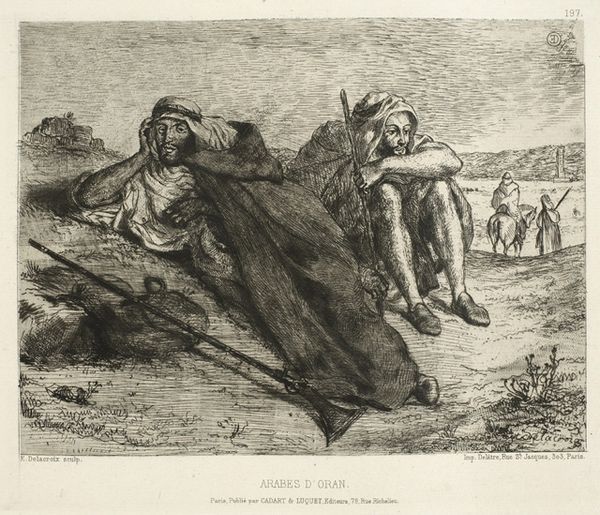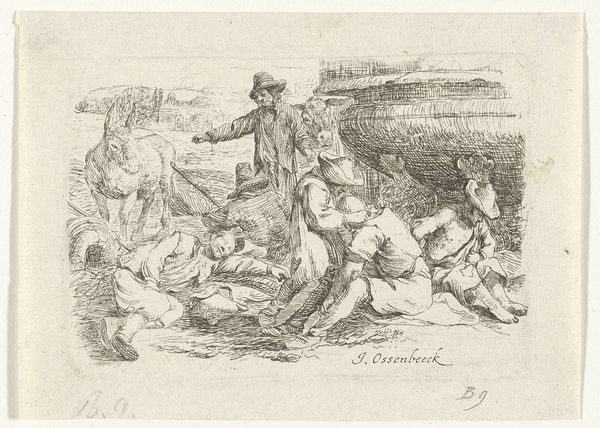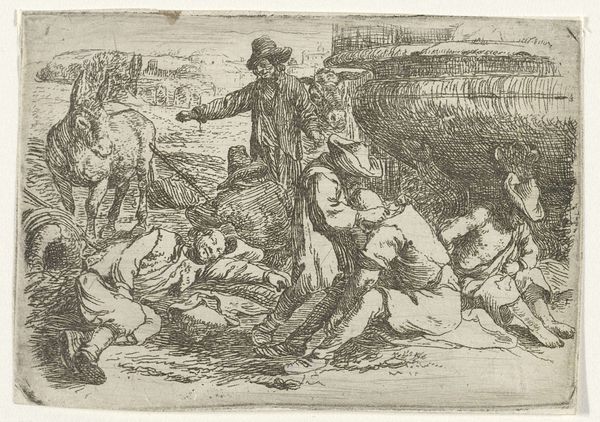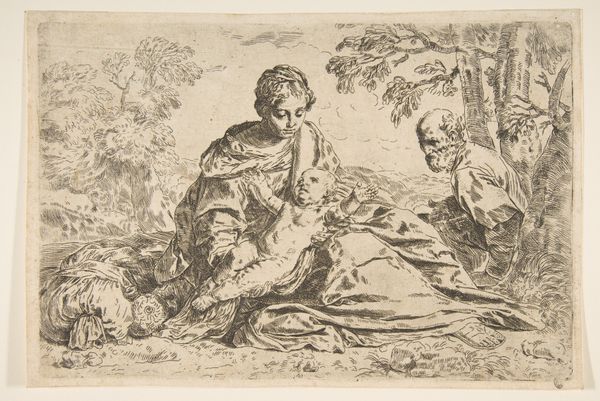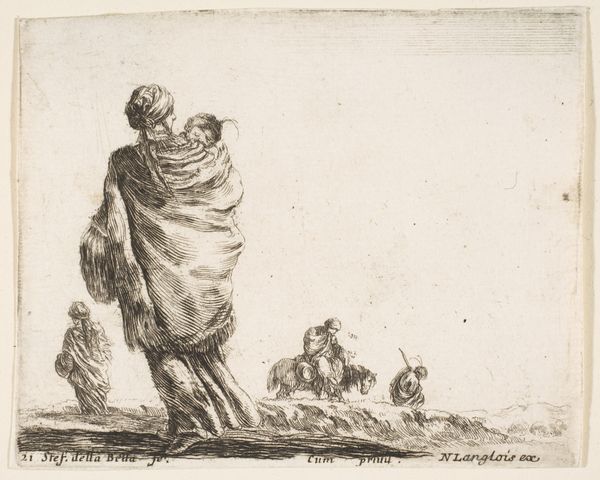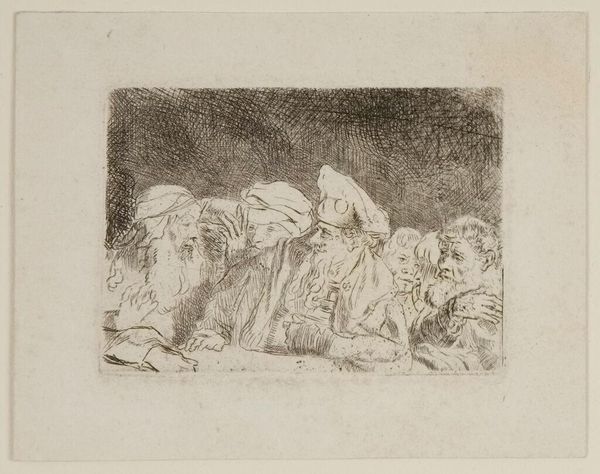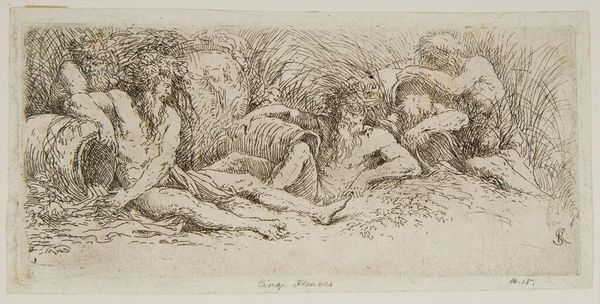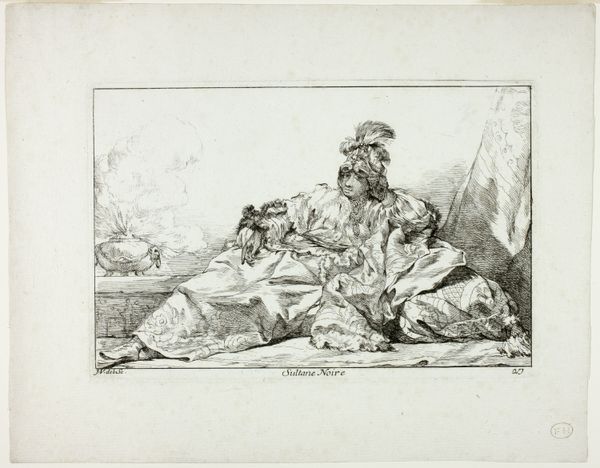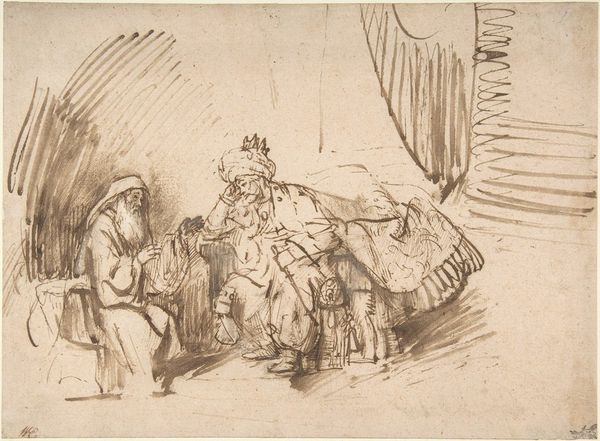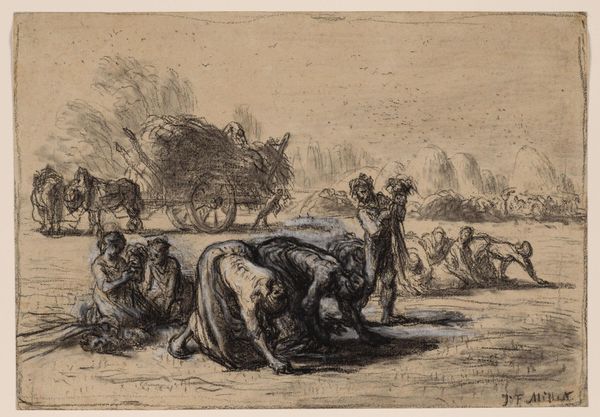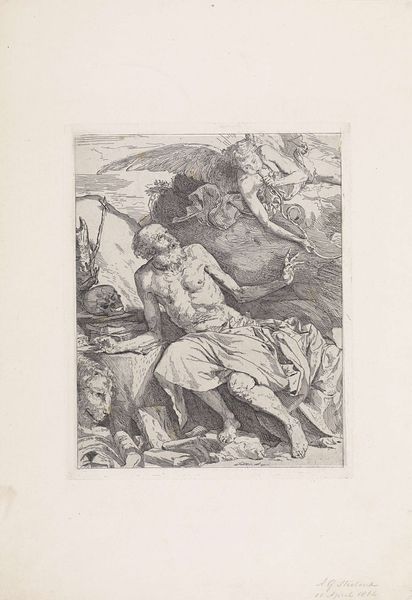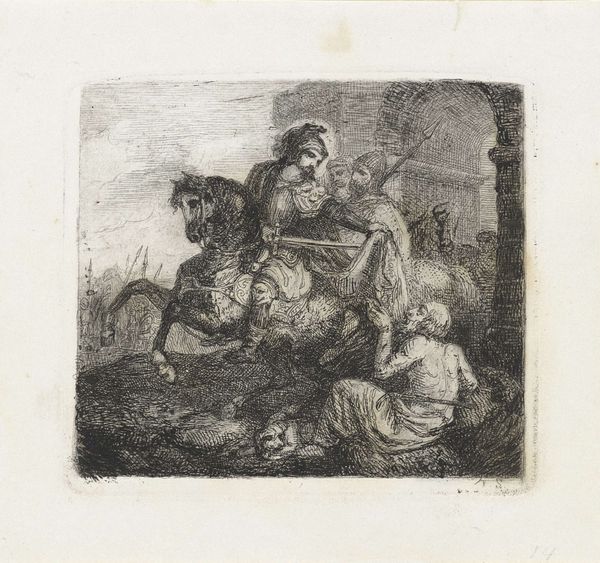
drawing, print, etching
#
portrait
#
drawing
# print
#
etching
#
landscape
#
pencil drawing
#
romanticism
#
history-painting
Copyright: Public Domain: Artvee
Editor: So, this is "Arabes d’Oran" by Eugène Delacroix, created in 1833, using etching. It's a monochrome image with a subdued feel. The composition and etching technique gives a real texture to the characters in the piece. What strikes you about its visual language? Curator: Observe the distribution of light and shadow, how it sculpts the figures and suggests depth despite the limitations of a two-dimensional plane. Delacroix meticulously exploits the etched line not only to define form, but to articulate tonal variations and imply textural complexity. Editor: Do you think this emphasis on light and texture makes the art more emotionally compelling? Curator: Certainly. Note also the dynamic interplay between the foreground, occupied by the lounging figures, and the more loosely defined background which hints at space and distance. Does this tension not introduce a spatial and perhaps even a psychological ambiguity, urging us to look more intently? Editor: I can definitely see how the contrasting details and vagueness create depth, but is this technique typical for Delacroix? Curator: Delacroix frequently explored such strategies. Note here the formal structure with line, texture and contrasts. But what could we read in these details beyond form itself? Are these Arab figures being respectfully depicted or is their image simply being consumed as raw material? Editor: It seems Delacroix balances both artistic and social observation. That tension really adds depth to how I appreciate the visual choices made. Curator: Precisely. Analyzing how formal components—line, form, space, tonality—interact is key, while remaining sensitive to implications. Every line tells a story, wouldn't you agree?
Comments
No comments
Be the first to comment and join the conversation on the ultimate creative platform.
